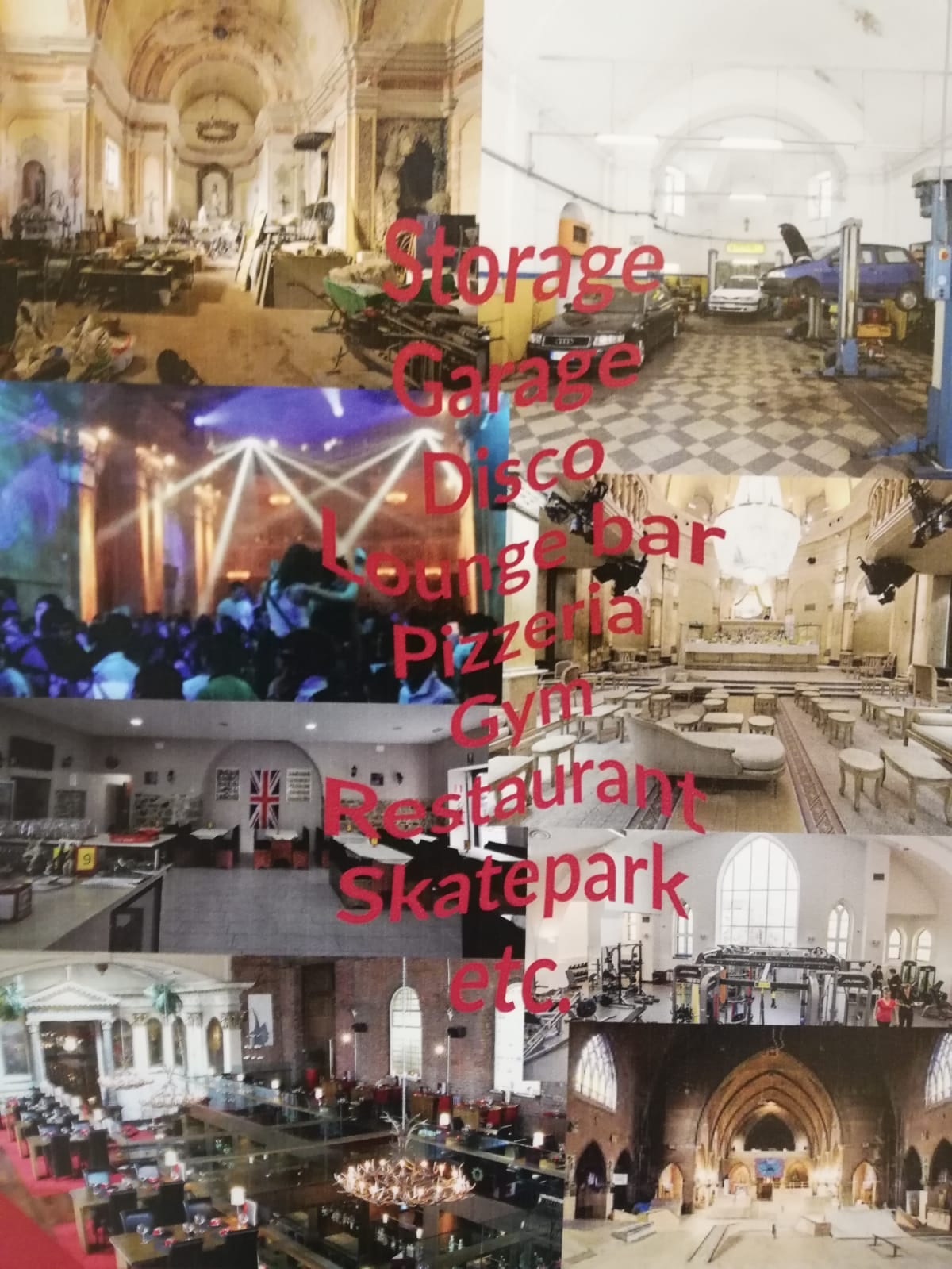ROME – What was once a place of worship and prayer increasingly can become your local restaurant, barbershop and even dance club, as a growing number of churches across the Western world are being left in abandonment or disrepair and then “repurposed.”
RELATED: As secularism mounts, Vatican tries to rescue abandoned churches
A Vatican-sponsored conference in Rome Nov. 29-30 discussed the reasons for and implications of this phenomenon, and approval of guidelines for local dioceses to address it.
“The common sense of the faithful perceives the permanence of a sort of imprint for places and objects intended for worship that does not end, even after they have lost that purpose,” said Pope Francis in a message to organizers and participants at the event.
The remarks were read at the international congress called, “Does God not live here anymore? Disposal of places of worship and integrated management of ecclesiastical cultural assets,” sponsored by the Vatican’s Pontifical Council for Culture, the Italian Bishops’ Conference (CEI) and the Gregorian University in Rome.
The pope’s message was read by Italian Cardinal Gianfranco Ravasi, President of the Pontifical Council for Culture, who organized and announced the event in July.
Places of worship, the pope wrote, can be instruments for evangelization and charity, even after they are no longer being used for religious purposes. He also said that when necessary, places of worship “must serve the greater good of the human being and especially the service of the poor.”
The conference took place just as several scandals concerning decommissioned churches have emerged.
In Naples, in southern Italy, a 2013 picture showing a shirtless girl next to Chilean-French filmmaker Alejandro Jorodowsky created an uproar after it became known that it was taken inside the decommissioned Church of Santa Chiara, currently used for artistic performances.
In the same city, a deconsecrated church dedicated to its patron Saint Gennaro all’Olmo was used for a Halloween party, which included cocktails, dancing and even a reenactment of a hanging over the altar.
176 photos published on Facebook – some portraying scarcely clad women posing over the altar – led the local diocese to withdraw the concession it had made to the Gianbattista Vico Foundation that was managing the property for the time being.
Naples represents only a small sample, according to experts, of various dubious uses of former places of worship. All over Europe and North America churches are being refashioned as gyms, skating rinks, bars and storage rooms.
“We are very interested in other utilizations,” said Father Stefano Russo, General Secretary at CEI, referring to decommissioned churches, “especially when they are used for profane purposes.”
Russo deemed “inappropriate” the transformation of a church into a restaurant, or the celebration of a civil marriage in a deconsecrated place of worship. He called for “balanced transformations in line with the patronage of such architecture.”
“Other kinds of utilizations of churches will increase over the years,” he added.
Fewer people attending Mass, demographic concentration of the population in the cities, financial mismanagement and declining vocations are only a few of the factors that have contributed to this trend in Western countries.
According to Father Pawel Malecha, a member of the Supreme Tribunal of the Vatican’s Apostolic Signatura speaking at the conference, “there are no secure legal tools to avoid the inappropriate use of decommissioned places of worship.”
Despite the scale and complexity of the phenomenon, some observers have chosen to see the glass as half full by accepting the challenge of changing the attitude toward places of worship and their afterlife.
“What if having to close churches is a provocation to create different ones?” asked Italian Sociology professor Luca Diotallevi. The scholar proposed that reimaging “the theology of the city” could lead to new interpretations of the temple, including mobile churches.
This view seems to coincide with that of Ravasi, who has consistently been a critic of what he considers to be the “ugliness” of many churches today. The Vatican’s culture czar recently closed an exhibit he sponsored at the famed Biennale of Venice architecture exhibition, where ten chapels reimagining places of worship were on show.
An optimistic view on the challenge that the decommission of churches poses was also shared by the President of the Council of the Bishops’ Conferences of Europe, Italian Cardinal Angelo Bagnasco.
“We must look at the new complexities with realism, efficiency and faith,” he told attendees of the event at the Gregorian University in Rome. “The instinct of the absolute, of the infinite, of the sacred cannot end and

will not die.”
Even Francis in his message said that the fact that many churches “are no longer necessary” should be seen by the Church “not with anxiety, but as a sign of the times that invites us to reflect and requires us to adapt.”
He also suggested that the use of churches for museums or art shows respectful to Catholic tradition and heritage can give them a “second life,” one that can still serve to evangelize and promote the faith.
Concerning guidelines that will emerge as a result of the conference, the pope emphasized that “the concrete and final choices will be up to the bishops.”
“Selling must not be the first and only solution to think about, nor must it ever be carried out with scandal on the part of the faithful. If necessary, it should be included in the ordinary pastoral planning in good time, be preceded by adequate information and be as shared as much as possible,” he said.
















